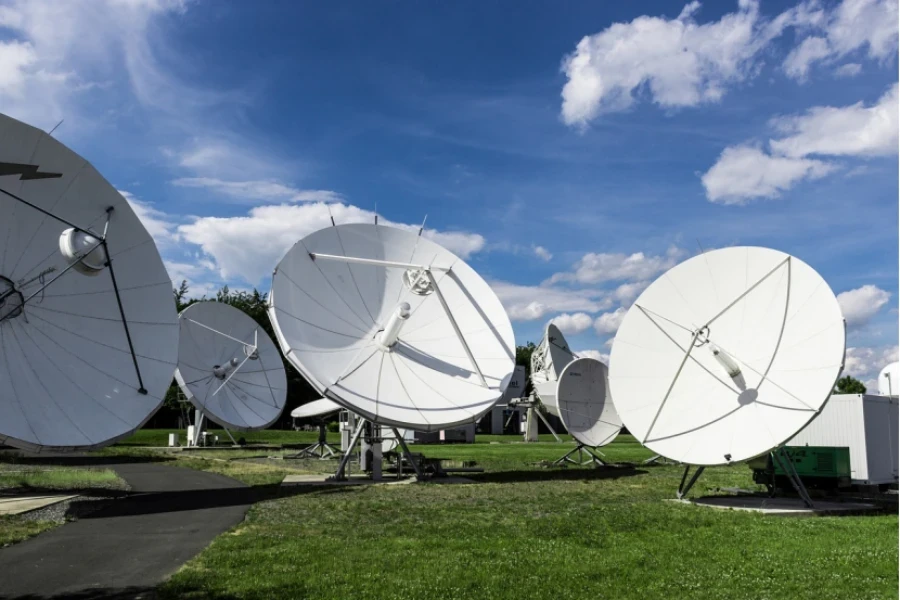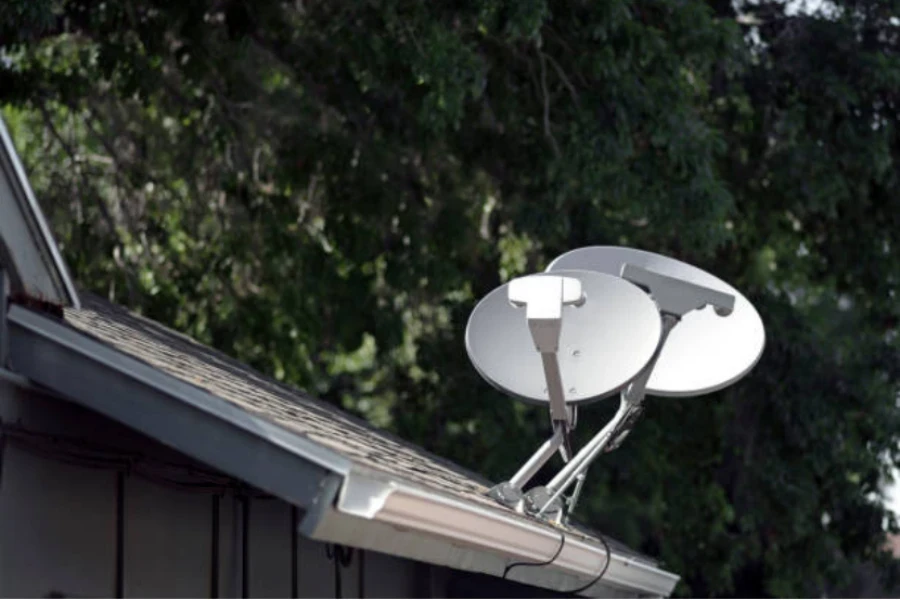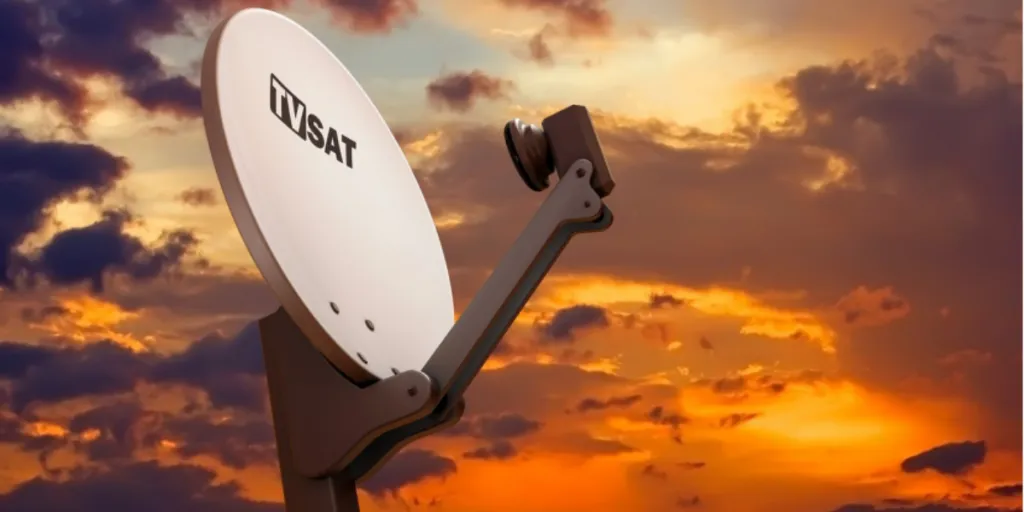Satellite TV receivers have transformed the realm of home entertainment. Once a luxury, these devices are now pivotal in delivering a plethora of channels and high-definition content to screens worldwide. As the digital age progresses, the demand for crisp visuals and uninterrupted broadcasts has surged. For businesses aiming to cater to this growing need, understanding the nuances of satellite TV receivers becomes paramount. These devices not only ensure seamless transmission but also offer features that elevate the viewing experience. As 2024 unfolds, staying abreast of the intricacies of these receivers can be the key to tapping into a market that values quality and innovation.
Table of Contents
Understanding the basics
Current trends and advancements
Essential components and receiver variations
Guidelines for optimal selection
Conclusion
Understanding the basics

Evolution of satellite TV receivers
Satellite television, a transformative service in content consumption, broadcasts programs via communications satellites directly to viewers. This is facilitated by an outdoor satellite dish and a low-noise block downconverter, with the receiver decoding the program for television viewing. These receivers can be external set-top boxes or integrated television tuners.
Satellite television’s inception involved systems like the television receive-only (TVRO) that received weaker analog signals and required large 2–3-meter dishes. However, the shift to digital signals enabled high-definition broadcasting. Today’s systems use X band or Ku band frequencies, necessitating a smaller dish. This transition to digital and the advent of compact dishes are pivotal in the receiver’s evolution.
Significance in today’s entertainment
Satellite television is integral to contemporary entertainment, offering a vast array of channels for varied tastes. In areas lacking terrestrial or cable services, it’s often the sole entertainment source. Its digital nature ensures high-definition content, guaranteeing an enhanced viewing experience.
Satellite television’s uniqueness lies in its direct content delivery from satellites, eliminating the need for ground infrastructure. While early satellite dishes were large, today’s versions are compact yet efficient. Operating on higher frequencies, they ensure smaller dish sizes and superior signal quality. With a plethora of channels, often more than terrestrial or cable TV, and high-definition content, satellite TV offers an unparalleled entertainment experience.
Current trends and advancements

Technological leap
The satellite sector is rapidly evolving, mirroring advancements in internet and mobile domains. High throughput satellites (HTS) have emerged as game-changers, offering 500 Gigabits of capacity, a significant leap from earlier models. These HTS deliver broadband speeds up to 100 Mbps with reduced latency. Additionally, $13 billion has been invested in satellite tech startups, particularly those focusing on Low (LEO) and Medium Earth (MEO) Orbit systems. These startups are either merging with industry giants or making public debuts. Notably, satellite technologies are now integrated into 5G standards, encompassing diverse connectivity forms and Internet of Things (IoT) integration.
Global shifts dictating product designs
Innovations in the satellite sector are reshaping the market, introducing novel business models and applications. The European Conference of Postal and Telecommunications Administrations (CEPT) emphasized the scalability of satellite technologies and their efficient bandwidth usage. Their universal reach ensures consistent signal quality, irrespective of location, making them ideal for IoT applications, which require vast connectivity.
The Era of smart satellite integrations
Satellites are now intertwined with other tech sectors, notably being incorporated into the 5G standards, which are projected to yield $2.2 trillion in the coming 15 years. The industry has adopted assembly line production for satellites, enhancing production speed and quality while cutting costs. For instance, the OneWeb facility in Orlando, FL, is known to produce satellites at an impressive rate. Innovations in satellite design, software, and materials, including LEO and MEO satellites and cubesat constellations, are offering unparalleled services.
Essential components and receiver variations

Core elements
A satellite TV receiver is more than just a conduit for television signals. At its core, it is a sophisticated piece of technology designed to decode satellite signals and convert them into viewable content. The primary components include the tuner, which captures the satellite signal; the decoder, which translates the captured signal into audio and video; and the output interface, ensuring the decoded content is compatible with televisions or projectors. Additionally, modern receivers come equipped with storage capabilities, allowing for recording and playback, and interfaces for enhanced connectivity options.
Differentiating between prominent receiver types
In the expansive world of satellite TV receivers, certain models have garnered attention for their standout features. The GT MEDIA V8X HD, for instance, is renowned for its high-definition output and user-friendly interface. On the other hand, the GT MEDIA V7S2X HD is celebrated for its efficient signal decoding and robust build. While these are just two examples, the market is replete with variations, each tailored to specific needs. It’s imperative for professionals to discern the nuances of these models, ensuring they align with the requirements of their target audience.
Compatibility and seamless integration
In today’s interconnected world, the value of a satellite TV receiver extends beyond its standalone capabilities. Its true potential is realized when it seamlessly integrates with other components of a home entertainment system. Whether it’s ensuring the receiver supports the latest audio technologies or verifying its compatibility with specific television models, such considerations are paramount. A receiver that doesn’t integrate well can lead to diminished viewing experiences, making compatibility checks essential. Furthermore, with the advent of smart home technologies, the ability of receivers to integrate with broader home automation systems is becoming increasingly significant.
Guidelines for optimal selection

Factors to consider
Choosing the right satellite TV receiver is more intricate than just picking a renowned brand. It’s essential to delve into the technicalities. For instance, while resolution support for HD or 4K is standard, some modern receivers also cater to the emerging 8K format. The tuner’s type is vital; some advanced models can decode multiple signals simultaneously, enhancing the viewing experience. Connectivity options, such as HDMI ports, USB inputs, and Wi-Fi capabilities, can dictate the receiver’s versatility.
Storage capacity becomes paramount for enthusiasts who record shows or movies. Moreover, some receivers are tailored for specific satellite services, so ensuring compatibility is crucial. And, while often overlooked, a user-friendly interface can make or break the user experience, especially for those who frequently navigate through various channels and settings.
Expert reviews
In a saturated market, expert reviews act as a compass. These insights, often from seasoned professionals, provide a holistic view of a product. They don’t just stop at listing features; they evaluate real-world performance, potential glitches, and even the product’s longevity. For instance, a receiver might boast of high storage, but reviews might reveal slow performance during playback. Such nuances are invaluable. While personal preferences play a part, consistent feedback across different expert platforms often paints an accurate picture, helping professionals sidestep potential pitfalls.
Balancing cost and performance
Selecting the right satellite TV receiver often requires a delicate balance between cost and performance. While it’s tempting to opt for the most affordable option, it’s crucial to ensure that the chosen receiver meets the desired performance standards. Consider two hypothetical satellite TV providers. While one seems to offer a better dollar-to-channel ratio, the other might include more premium channels and additional services in their packages, justifying the higher price for users.

Moreover, it’s not just about the number of channels. The type of channels, the quality of broadcast, and additional features like DVR capabilities can significantly influence the overall value. For instance, a DVR service that can store more hours of HD content might cost slightly more but could be invaluable for those who prioritize recording and playback features. Additional costs, such as equipment fees and installation charges, can also impact the overall price. Some providers might offer a seemingly affordable package but might charge extra for essential equipment or additional features. It’s essential to factor in these hidden costs when comparing different satellite TV receivers.
In the long run, it might be more cost-effective to invest in a slightly pricier model that offers superior performance, a broader range of features, and better overall value. Such an investment could offset potential future costs related to repairs, replacements, or upgrades.
Conclusion
As 2024 unfolds, the satellite TV receiver market continues to evolve, presenting both opportunities and challenges for professionals in the industry. Making an informed choice requires a deep understanding of the product’s intricacies, the latest technological advancements, and the shifting preferences of the global audience. While the allure of cutting-edge features can be enticing, it’s the marriage of functionality, compatibility, and value that often dictates a product’s success.








